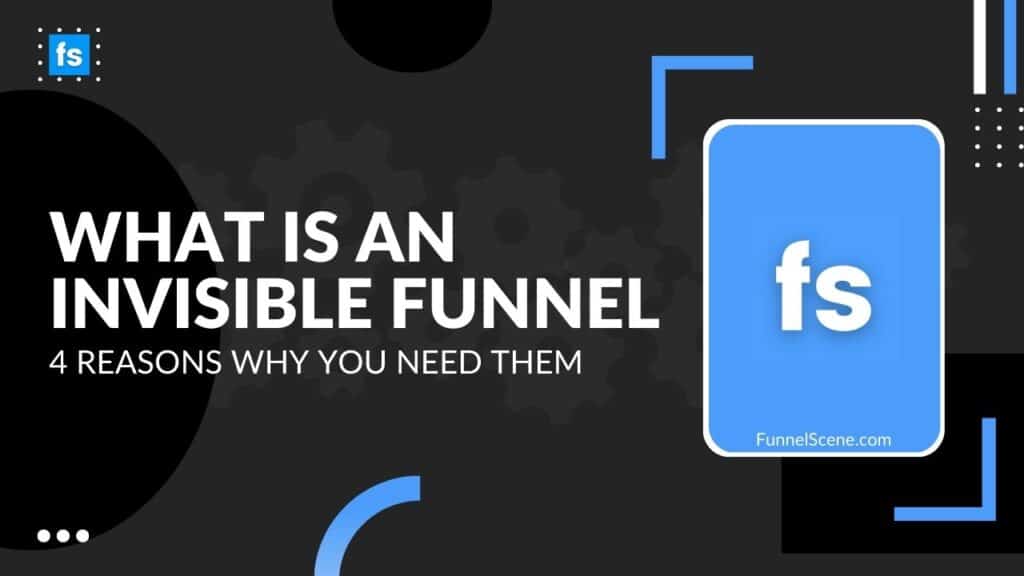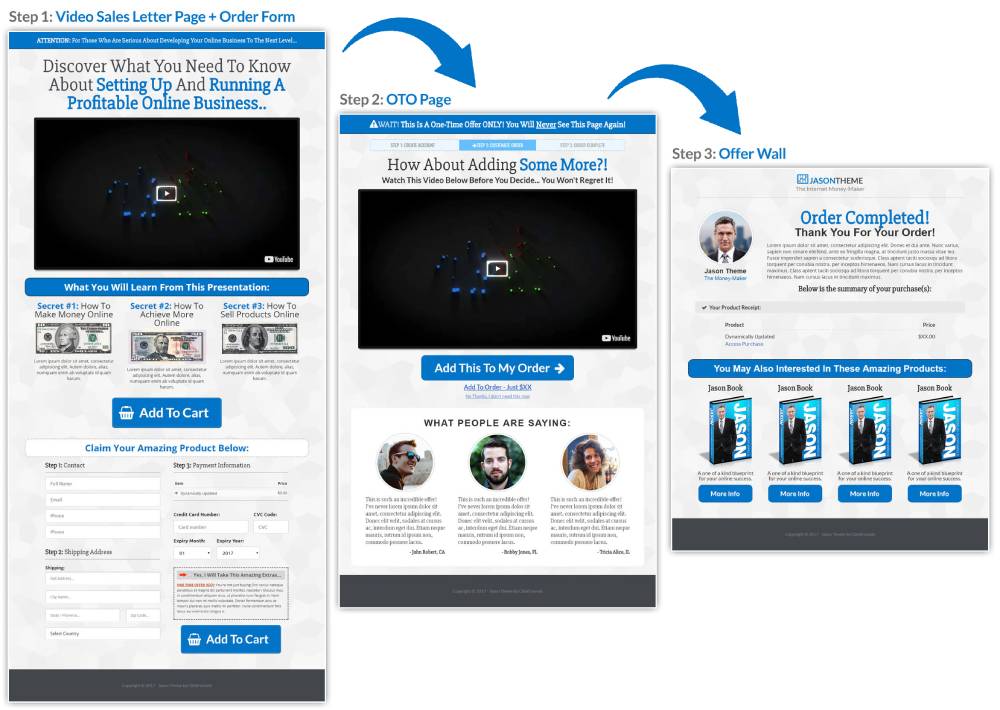In today’s digital age, businesses need to have an online presence to reach a wider audience and grow their brand. However, with so much competition, it can be challenging to stand out and convert visitors into customers. That’s where the concept of a sales funnel comes in – a process that guides a potential customer through a series of steps toward making a purchase. But have you ever heard of an invisible funnel?
In this article, we’ll explore what an invisible funnel is, how it works, why people use it, what industries they are used in, how to build one, and the benefits of implementing an invisible funnel strategy.

What is a Funnel?
Before we dive into what an invisible funnel is, let’s first understand. A normal sales funnel is a marketing strategy that is designed to guide potential customers through a series of steps toward making a purchase. The process typically involves creating awareness of your product or service, generating interest, building desire, and ultimately, prompting an action (such as purchasing).
Traditionally, funnels are visualised as a funnel shape, where a large number of potential customers enter at the top, and as they move through the funnel, some drop out, and fewer make it to the bottom, where they become paying customers. This funnel shape is used to represent the conversion rate, where the percentage of visitors who become customers decreases as they move through the funnels.
How Does an Invisible Funnel Work?
An invisible funnel is a variation of a traditional funnel, but instead of guiding potential customers through a series of steps, it uses automated processes and tools to guide customers through the journey without them even realizing it. The goal of an invisible funnel is to create a seamless customer experience where customers feel like they are in control of their journey, while in reality, they are being guided towards a purchase.
Invisible funnels typically use a combination of marketing automation, retargeting, and behavioral analysis to guide customers through the journey. The process starts with creating awareness of your product or service, which can be achieved through various content marketing channels such as social media, search engine optimization (SEO), and paid advertising.
Once potential customers become aware of your product or service, the next step is to generate interest. This can be achieved through providing educational content, highlighting the benefits of your product or service, and offering a free trial.
As potential customers move through the journey, their behavior is analyzed to determine their level of interest and intent to purchase. This information is used to personalize their experience and guide them toward making a purchase.

Why Use an Invisible Funnel?
There are four reasons why you should be using invisible funnels:
- Improves Customer Experience: Invisible funnels create a seamless customer experience where customers feel like they are in control of their journey, while in reality, they are being guided towards a purchase. This improves the overall customer experience and increases the likelihood of making a purchase.
- Increases Efficiency: Invisible funnels use automated processes and tools to guide customers through the journey. This increases efficiency and reduces the need for manual intervention.
- Improves Conversion Rates: By using personalized experiences and behavioral analysis, invisible funnels improve conversion rates and increase the likelihood of making a purchase.
- Reduces Customer Acquisition Costs: Invisible funnels are designed to guide potential customers through the journey without the need for expensive advertising campaigns. This reduces customer acquisition costs and increases profitability.
Industries That Use Them
This type of marketing funnel can be used in various industries, including:
- E-commerce: Invisible funnels are commonly used in e-commerce to guide potential customers through the journey from browsing to making a purchase. This can also include various invisible sale techniques like adding in a one-time offer
- B2B: Invisible funnels can also be used in B2B industries to guide potential customers through the journey from awareness to making a buying decision. This can be especially useful in industries where the sales cycle is longer and more complex, such as enterprise software or consulting services.
- Education: Invisible funnels can also be used in the education industry to guide potential students through the journey from awareness to enrollment. This can be achieved through providing educational content, highlighting the benefits of the institution, and offering a free trial.
- Healthcare: Invisible funnels can be used in healthcare to guide potential patients through the journey from symptom awareness to making an appointment. This can be achieved through providing educational content, highlighting the benefits of the healthcare provider, and offering online appointment booking.
How to Build an Invisible Funnel
Building this type of strategy involves several steps:
- Identify Your Target Audience: The first step is to identify your target audience and understand their needs and pain points. This information will be used to create personalized experiences and guide them toward making a purchase.
- Create Awareness: The next step is to create awareness of your product or service. This can be achieved through various marketing channels such as social media, search engine optimization (SEO), and paid to advertise.
- Generate Interest: Once potential customers become aware of your product or service, the next step is to generate interest. This can be achieved through providing educational content, highlighting the benefits of your product or service, and offering a free trial.
- Analyze Behavior: As potential customers move through the journey, their behavior is analyzed to determine their level of interest and intent to purchase. This information is used to personalize their experience and guide them toward making a purchase.
- Personalize Experience: The final step is to personalize the experience based on the customer’s behavior and level of interest. This can be achieved through retargeting ads, personalized email campaigns, and offering incentives such as discounts or free trials.

Benefits of an Invisible Funnel
Implementing an invisible funnel strategy can provide several benefits for businesses, including:
- Improved Conversion Rates: By using personalized experiences and behavioral analysis, invisible funnels improve conversion rates of the selling process and increase the likelihood of making a purchase.
- Increased Efficiency: Invisible funnels use automated processes and tools to guide customers through the journey. This increases efficiency and reduces the need for manual intervention.
- Improved Customer Experience: Invisible funnels create a seamless customer experience where customers feel like they are in control of their journey, while in reality, they are being guided towards a purchase. This improves the overall customer experience and increases the likelihood of making a purchase.
- Reduces Customer Acquisition Costs: Invisible funnels are designed to guide potential customers through the journey without the need for expensive advertising campaigns. This reduces customer acquisition costs and increases profitability.
Final Thoughts
In conclusion, an invisible funnel is a variation of a that uses automated processes and tools to guide customers through the journey without them even realizing it. The goal of an invisible funnel is to create a seamless customer experience where customers feel like they are in control of their journey, while in reality, they are being guided towards a purchase. Businesses can benefit from using these funnels by improving conversion rates, increasing efficiency, improving customer experience, and reducing customer acquisition costs.
To build an invisible funnel, businesses need to identify their target audience, create awareness, generate interest, analyze behavior, and personalize the experience based on the customer’s behavior and level of interest.



